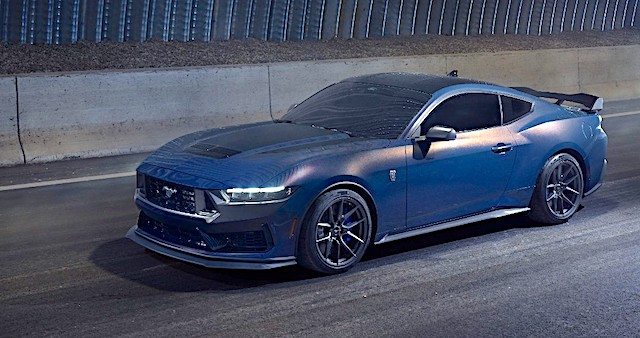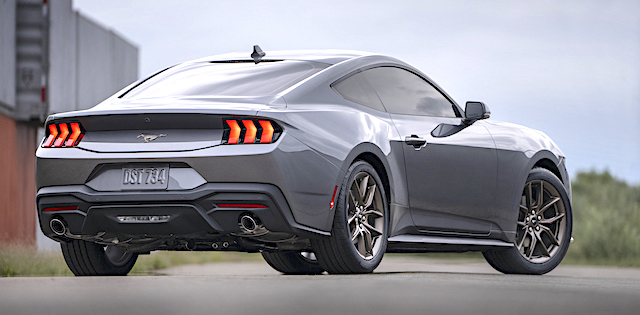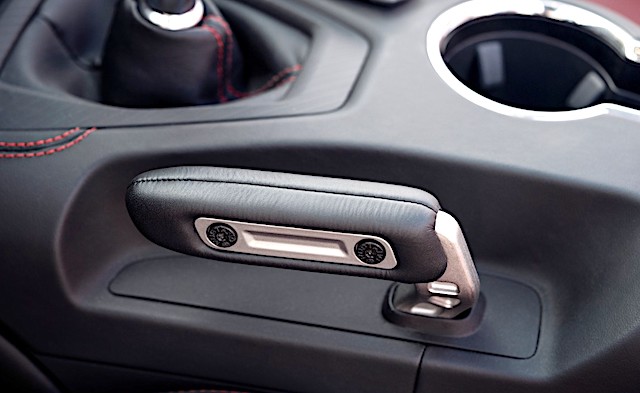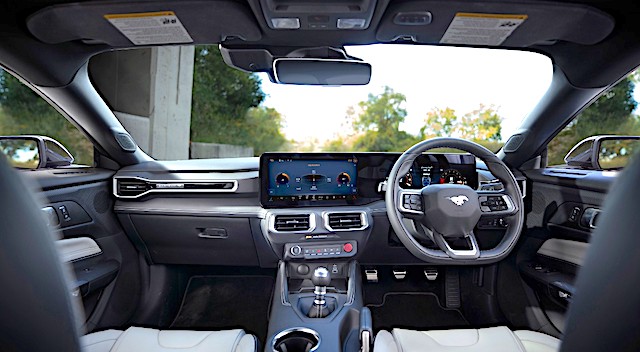
Ford will keep building the petrol-powered V8 Mustang as long as there’s demand for it – or until US environmental lawmakers rule it out of existence.
That’s the word from the carmaker’s executive chairman William Clay Ford Junior at the launch at the Detroit motor show of the seventh-generation muscle car.
Ford Jnr, great-grandson of company founder Henry, told media at the event that “if people don’t want them (Mustangs) anymore, it’ll go away. But I personally believe that people are going to want this vehicle for quite some time.”
Asked if the new model could be the last with an internal combustion engine, Ford Jnr said: “The answer is ‘we’ll see’. Customers will let us know. That day will come with a tear in my eye. Because, you know, I’ve loved the Mustang all the way from 1964.”
Customers are today’s influencers as demand for cleaner burning vehicles grow. “We’re really well positioned for wherever our customers are going to take us,” said Ford Jnr. “I think right now we’re the second largest electric vehicle seller today. And we have a lot more coming. But we’re still in the internal combustion game too.”
The car giant has launched a $US50 billion plan to more than triple the number of EVs it sells globally over the next four years. It will focus on EV models like the F-150 Lightning pick-up, the Mustang Mach-E, and the E-Transit van before further expansion.
Ford Jnr’s commitment to the ‘internal combustion game’ was made perfectly clear with the launch of a special go-faster version of the new Mustang, the first new performance series in 21 years.
It’s the premium Dark Horse model, a track-focussed option sporting handling, aerodynamic, hardware and software improvements and a more powerful 5.0-litre Coyote V8 engine mated to a six-speed manual or automatic gearbox. It is pictured at the top of this page.
Dark Horse will be available in New Zealand when the Mustang range lands here later next year. No official details yet but indications are that its V8 will deliver a genuine 500bhp (373kW), or 17bhp (13kW) more than the standard model’s 483bhp (360kW). The current V8 Mustang delivers around 454bhp (339kW).
Joining the new V8 range will be an updated version of the turbocharged 2.3-litre four-cylinder Mustang. But unlike the current 2.3-litre, the 2023 example gets styling changes at the front end to identify it from its V8 brethren.
What isn’t known at this stage is whether the electronic “drift brake” function will be available for NZ. It looks like a handbrake (pictured below) and is said to work like “line lock” on the outgoing Mustang, a feature that wasn’t available here.
Line lock locked the front wheels via the push of a button, thereby allowing the rear wheels to spin to raise tyre temperatures before a race. But it was disabled on Mustangs for this part of the world because of Australia’s “anti-hooning” laws about burnouts.
Inside the 2023 range, in a blend of analogue and digital technology, Ford has also made subtle design changes to identify different models. The new dashboard, for example, has dual screens angled towards the driver. In entry-level models they are two separate displays; in up-spec ones they are topped with a single glass panel for more of a widescreen look. The picture below has been rotated to indicate a right-hand-drive perspective.
Meantime, Ford’s pledge to meet demand for the internal combustion engine (ICE) has received European support from the CEO of BMW, Oliver Zipse, who told a German business magazine that “it’s wrong to switch off the combustion engine in Europe”.
He said a deadline for banning ICE in favour of the wholescale adoption of electric power “would lead to distortions that nobody here can control anymore”.
The comments echo those by Toyota and Ford who say motorists will still need a choice of what powers vehicles of the future, because not every country is rolling out electric tech at the same speed – and the world’s energy mining resources would be overwhelmed if every vehicle on the planet switched to electric power tomorrow.




